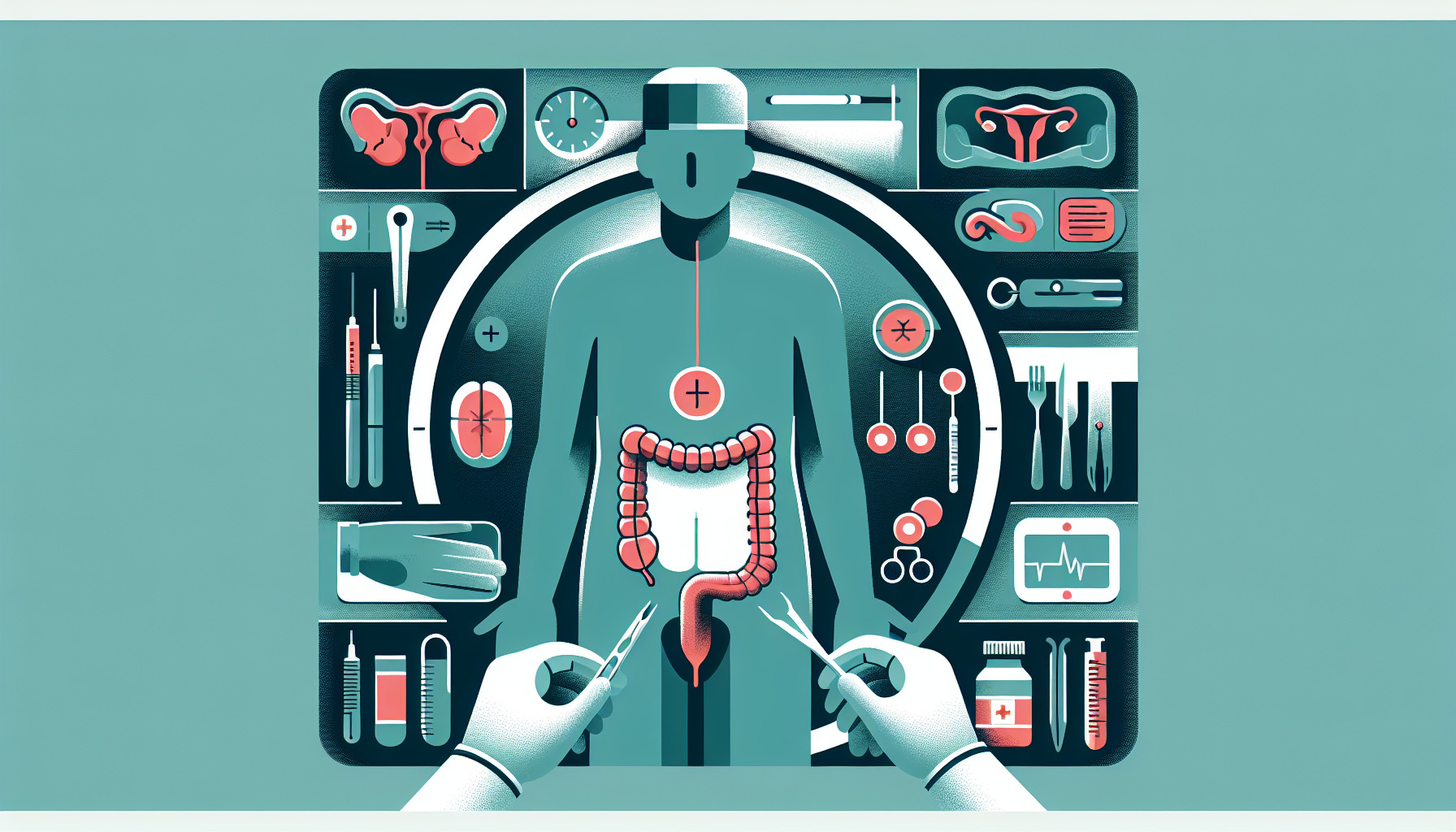Our Summary
This research paper reviews 17 studies to understand the impact of a procedure called lateral internal sphincterotomy (LIS) on the outcome of a hemorrhoid surgery. Hemorrhoids can be very painful, and several methods are used to reduce this pain after surgery.
The studies reviewed included 2180 patients with an average age of 44 years. They looked at the patients’ details, how they rated their pain after surgery, how much pain medication they took, and whether they had complications like fecal incontinence (loss of bowel control), urinary retention (difficulty emptying the bladder), or anal stenosis (narrowing of the anus).
The review found that of the total patients, 933 (42.7%) underwent LIS. Almost all studies reported lower pain scores and less need for pain medication after surgery for patients who underwent LIS compared to those who didn’t. However, 11 of the 13 studies found higher rates of temporary fecal incontinence among patients who had LIS.
The incidence of urinary retention after LIS ranged from 0 to 60%. Anal stenosis occurred in 0-14.5% of patients who had LIS versus 0-36.4% in patients without LIS.
In conclusion, LIS effectively reduced pain and the need for pain medication following hemorrhoid surgery. It also significantly reduced the incidence of urinary retention and anal stenosis. However, there was a minor negative aspect of temporary fecal incontinence after surgery for those who underwent LIS.
FAQs
- What is a lateral internal sphincterotomy (LIS) and how does it impact hemorrhoid surgery outcomes?
- What are the potential complications of LIS and how common are they according to the reviewed studies?
- How does a lateral internal sphincterotomy (LIS) affect the need for post-surgery pain medication in hemorrhoid patients?
Doctor’s Tip
Based on this research, a doctor might advise a patient considering a hemorrhoidectomy with LIS to be prepared for the possibility of temporary fecal incontinence after surgery. They may recommend discussing this potential side effect in more detail and discussing strategies for managing it post-operatively. It’s important for patients to weigh the benefits of reduced pain and need for pain medication against the risks of temporary fecal incontinence when making a decision about their treatment plan.
Suitable For
Overall, patients who are experiencing severe pain from hemorrhoids and have not responded well to other conservative treatments are typically recommended for a hemorrhoidectomy with or without a lateral internal sphincterotomy. This procedure is especially beneficial for patients with Grade III or IV hemorrhoids, as they are more likely to experience significant pain and discomfort. Additionally, patients who have a history of chronic hemorrhoid symptoms or have failed other non-surgical treatments may also be good candidates for hemorrhoidectomy.
It is important for patients to discuss their symptoms, medical history, and treatment options with their healthcare provider to determine if a hemorrhoidectomy with or without a lateral internal sphincterotomy is the best course of action for their individual situation.
Timeline
Before hemorrhoidectomy:
- Patient experiences symptoms of hemorrhoids such as pain, itching, bleeding, and discomfort
- Patient consults with a healthcare provider who may recommend conservative treatments like dietary changes, topical creams, and sitz baths
- If conservative treatments are ineffective, patient may be recommended for hemorrhoidectomy surgery
- Patient undergoes preoperative evaluations and preparations for surgery
After hemorrhoidectomy:
- Patient undergoes hemorrhoidectomy surgery to remove hemorrhoids
- Post-surgery, patient may experience pain, discomfort, and swelling in the anal area
- Patient is prescribed pain medication and instructed on proper wound care
- Patient may have follow-up appointments with their healthcare provider to monitor healing and address any complications
- Patient gradually resumes normal activities and diet as advised by their healthcare provider
- Patient may experience temporary fecal incontinence, urinary retention, or anal stenosis as potential complications of the surgery, which may require further treatment or management.
What to Ask Your Doctor
- What is a lateral internal sphincterotomy (LIS) and how does it impact the outcome of a hemorrhoidectomy surgery?
- What are the potential benefits of undergoing LIS during a hemorrhoidectomy?
- What are the potential risks or side effects associated with LIS during a hemorrhoidectomy?
- How does LIS affect post-operative pain levels and the need for pain medication?
- What is the likelihood of experiencing temporary fecal incontinence after undergoing LIS during a hemorrhoidectomy?
- What is the incidence of urinary retention and anal stenosis following LIS during a hemorrhoidectomy?
- Are there any alternative treatments or techniques that could be considered instead of LIS for a hemorrhoidectomy?
- How will my individual health condition and risk factors impact the decision to undergo LIS during a hemorrhoidectomy?
- What is the recovery process like for patients who undergo LIS during a hemorrhoidectomy compared to those who do not?
- Are there any additional precautions or recommendations I should follow if I choose to undergo LIS during my hemorrhoidectomy surgery?
Reference
Authors: Emile SH, Youssef M, Elfeki H, Thabet W, El-Hamed TM, Farid M. Journal: Int J Colorectal Dis. 2016 Jul;31(7):1261-72. doi: 10.1007/s00384-016-2603-9. Epub 2016 May 27. PMID: 27234042
